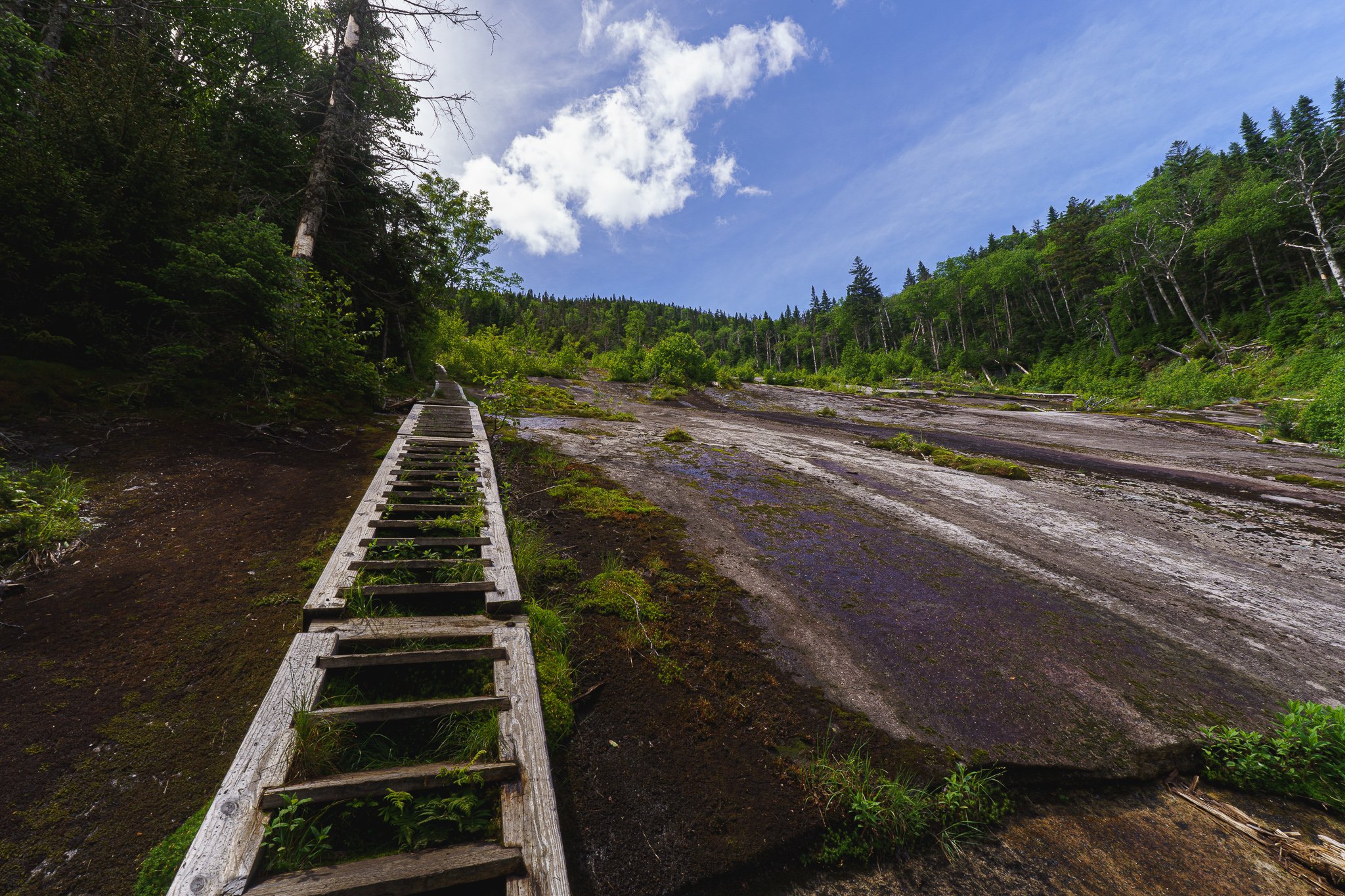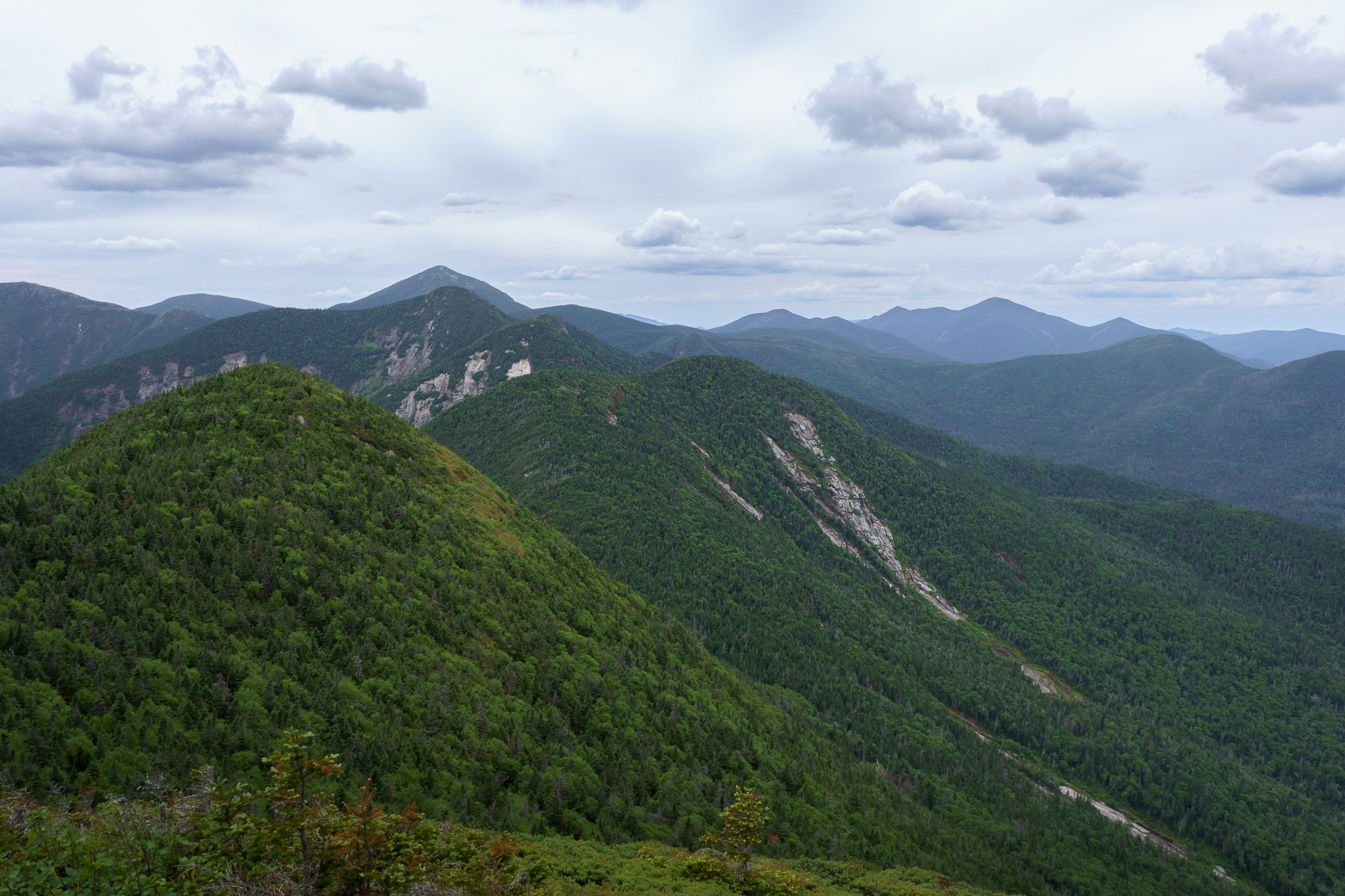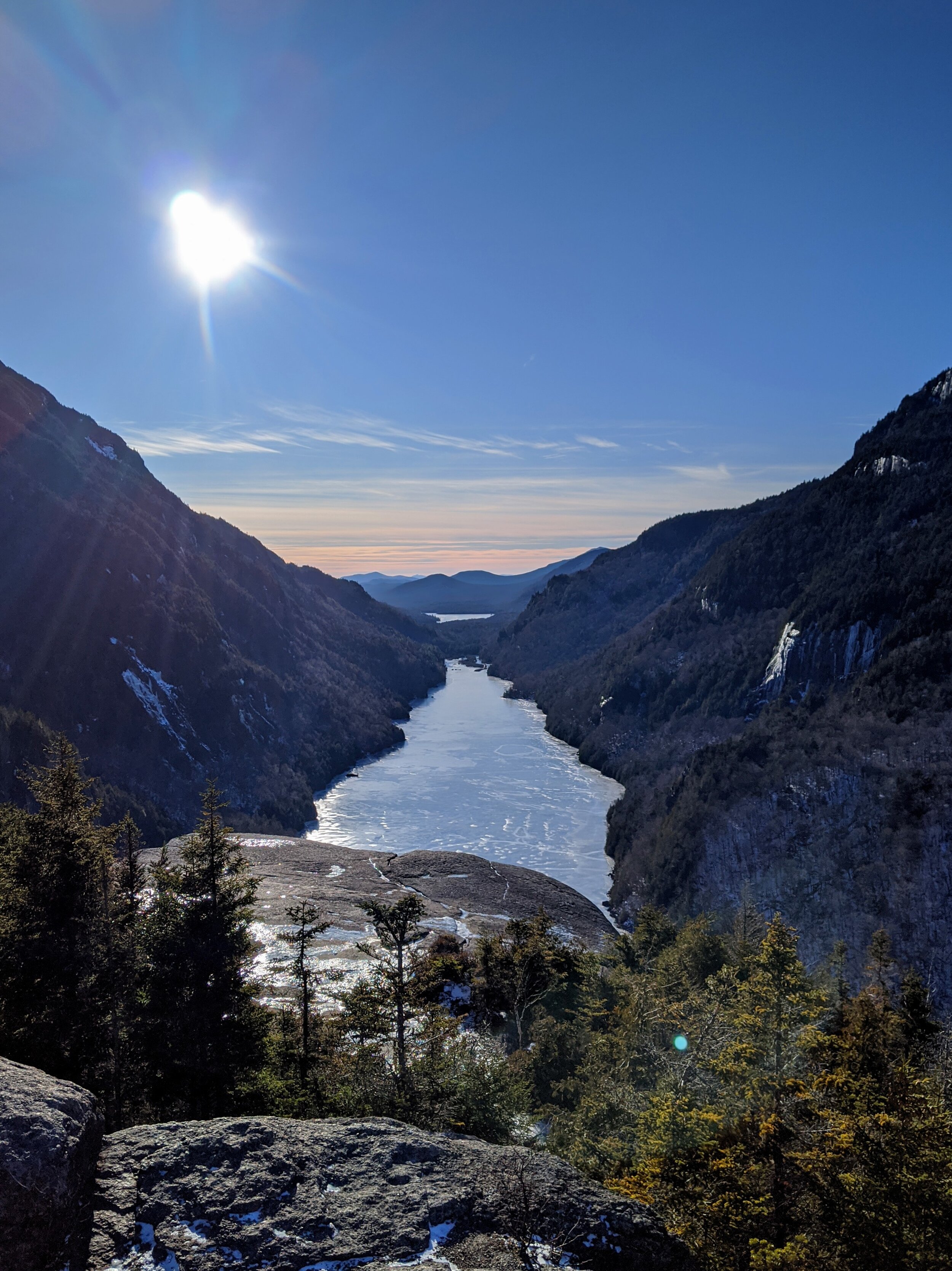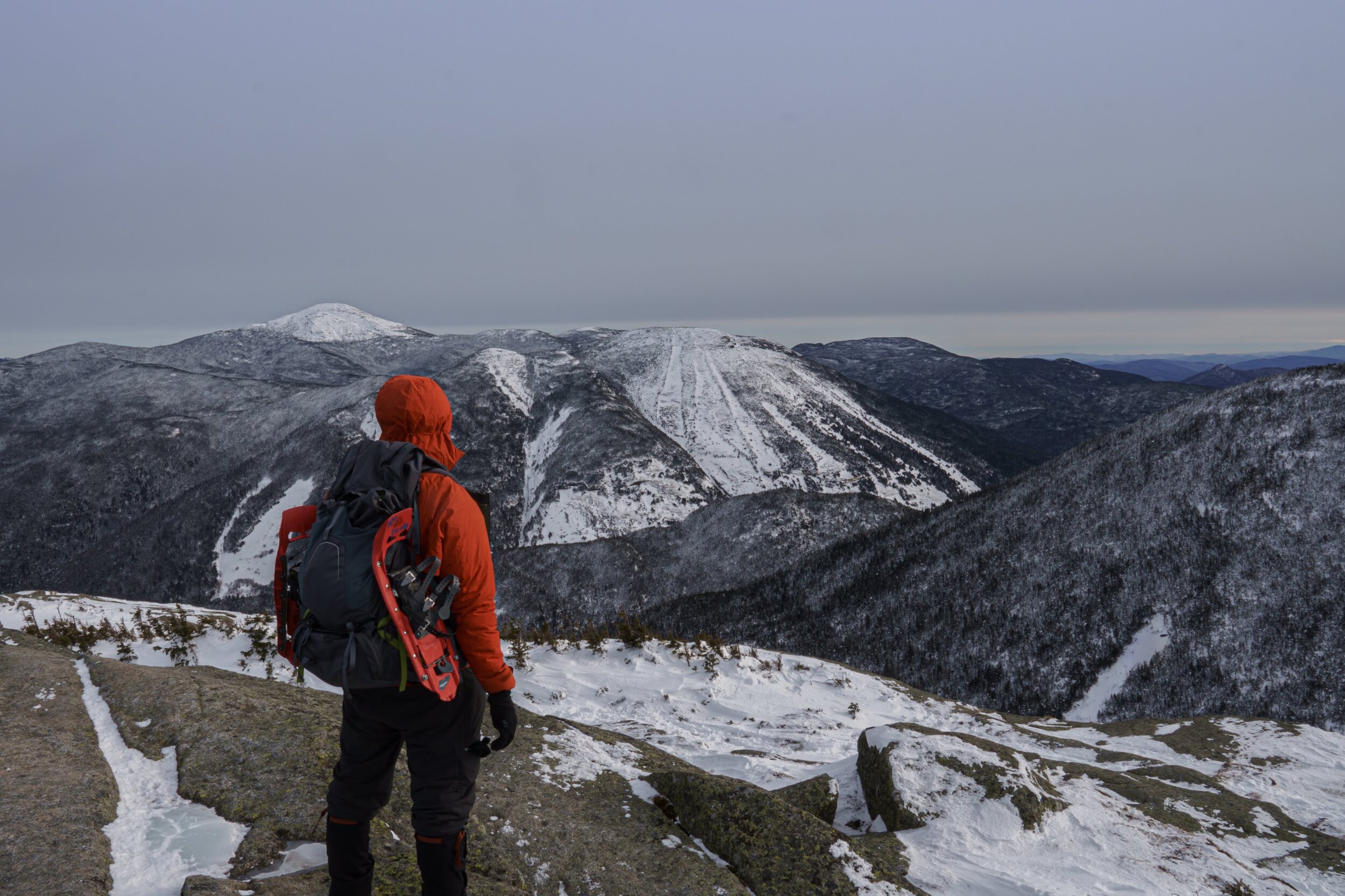The Adirondack Great Range
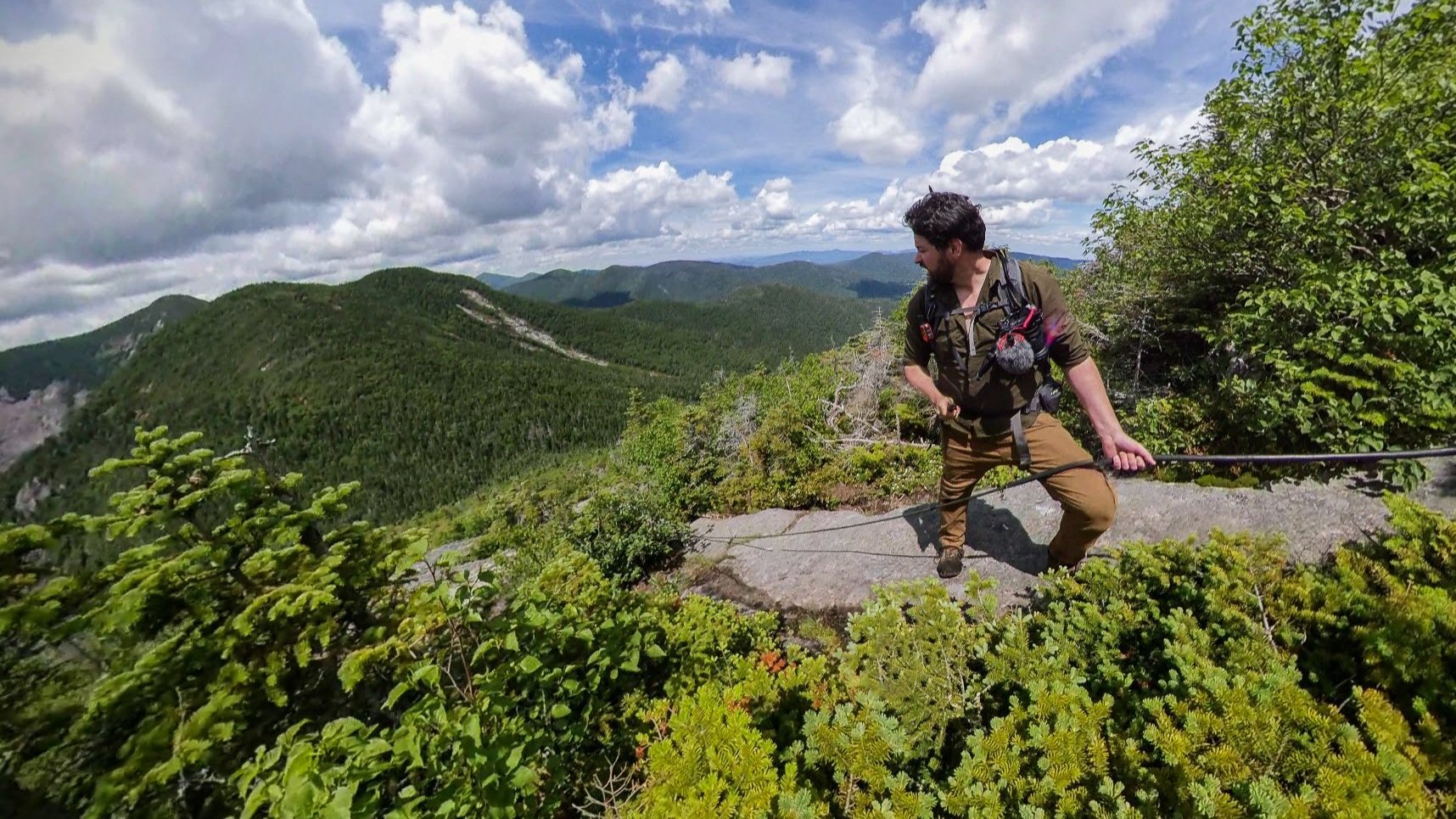
Intro:
The Great Range is the ridge that all hikers gaze upon from the summits of the other mountains in the High Peaks Wilderness.
Comprising of Gothics, Armstrong, Upper Wolfjaw and Lower Wolfjaw mountains, this range dominates the landscape with its bare-faced rockslides, resembling gothic architecture of the middle ages.
The 10th tallest peak in the Adirondacks, the Gothics was the most adrenaline pumping, fear inducing hike I have done in the high peaks and should not be underestimated.
The bare-faced rock climbs are steep to the point of needing cables to assist in the ascent. But the sketchiest part was just beyond the cables where there is nothing but a crack in the slab to hold on to as you make your final approach to the summit.
If you are looking for excitement, consider putting your trust solely in the friction of your boots and grip of your finger tips to get the blood pumping. As one misstep here will turn into a long, potentially deadly, nipple grinding tumble.
And that's just the first peak. There's still two more to scramble over before making your way back down.
In short, this is not the hike to break in your new boots.
DISTANCE: 13.44 MILES
ELEVATION GAIN: 3,819 FT
PEAK ELEVATION: 4,734 FT
The Approach
After a long drive up to the Keene Valley, I stashed the Jeep at the Garden Parking Area at the edge of the High Peaks Wilderness.
There was a small per-day parking fee, cash only, that you had to leave in an envelope. I wrote my license plate number down. But without a ranger there, it seemed to be on the honor system.
Which was fine by me as I am always down to support the preservation of these wilderness areas.
It was later in the day when I got there, so the plan was to hike a few miles in to set up camp and enjoy a peaceful night in nature before waking up with the sun to tackle the big climb.
I love going out on these adventures as a form of wilderness therapy for myself. And on top of that, I have the hobby of documenting these trips as a way to flex that creative muscle.
But I have been struggling back and forth recently with being fully present and immersed in my surroundings while doing it. When I plan on making a video, I find myself thinking about lighting, camera settings, and framing etc. instead of truly being present. I enjoy both. And editing photos and video is a great way to extend and preserve the adventure, so finding that balance can be a challenge.
So for this trip, I decided to stash my camera and enjoy the hike in, and evening at camp. I would document the climb the next day, and then enjoy another night, fully present in the naturey solitude. It worked out well.
So while taking in all the sights and sounds, I hiked a short 3 miles to the intersections of Phelps, Big Slide, and Orebed Brook trails where I set up camp.
There was a nice clearing where the sun shone through and I could watch the sky slowly dim to stars as the night went on.
The Gothics Cable Route
I knew I was going to loop back to this spot later in the day, so I packed up the essentials and left my tent and heavier gear there at the base camp.
The next two and a half miles on the Orebed Brook Trail were a gentle slope up through the forest with good flowing streams. I filled up on water in this section, as there were no reliable water sources up in the Alpine-Arctic Zone.
As the trail broke away from the Orebed Brook, I came across what looked to be the remnants of an avalanche slide. The roots and debris were easy enough to navigate. As I made my way around the bend, the view opened up to the big Gothics Slide.
This section was a big open slab with a long wooden staircase/ladder to assist in the ascent.
With my thighs burning I took a quick break to catch my breath at the top of the slide between Gothics and Saddleback Mountain.
From there the trail got steeper.
I don’t know what it is, but it is almost impossible for a photo to truly capture the degree of steepness. At least when looking up or down.
I took this profile shot, using the vertical trees to give a better sense of it.
There were a few times where I muttered to myself, “there’s no way this is still the trail. How the hell...?".
That is actually one of the things I like about wilderness areas. There is a certain degree of ‘you better know what you are doing’-ness, not found in the more popular hikes found in say a national park.
I continued on, exposed roots being my only hand holds up the nearly 45 degree rock.
Then, as I thought it couldn’t get any steeper, I saw it. Bolted down deep into the granite, the first section of cables to help get my weezing ass up this mountain.
I took hold of the cable and gave it a good tug, testing the strength of the decades-old bolts before trusting my life to them.
Seemed sturdy enough. And if not hopefully they would break early. Or really high up.
There is a sweet spot when it comes to falling. If you are close to the bottom, you’ll walk away with a few bruises and a hurt ego. If you are high up, you’ll fall, but very soon have little to worry about in this corporeal existence.
But it’s that inbetween zone that’s the scary part. The area where if you fell, you would most likely live, ...but probably wish you hadn’t.
Banishing the thought of the cables breaking from my mind, I continued upward.
Finally at the last bolt, the ground evened out enough to stand and catch my breath.
I looked back at the view and observed below me the route I had climbed up.
Damn.
In retrospect, it wasn’t that bad. The real tough part was ahead.
This wasn’t yet the summit of Gothics.
From here, there was a slab climb to the false summit, a short descent, and one last push to the top.
But it was that slab climb that was the most adrenaline inducing section of all the Adirondack climbs I had ever done.
I wandered around the ledge a bit, struggling to find the actual route I was supposed to take.
I finally saw a faded arrow painted on the slab above. But there is no way in hell that could be the way up.
I got the imaginary sense of the original trail blazers setting this route saying,
“Yep, this is still the trail. I mean, its climbable. It won’t be easy, but you can get up there… probably.”
The only way to advance was a seam in the rock that I could put both hands and the tips of my boots in, and then inch my way up.
At what point does hiking become rock climbing? I am pretty sure this is somewhere in the middle of that Venn diagram.
I pushed on incredulously, while becoming strangely intimate with the rock, as I put the full weight of my chest against it to rest.
It’s actually a shame. I got no footage of this section, as there was absolutely no safe way to film it. Even with the 360 camera sticking out of my pack, I would have to reach back to turn it on.
And with both hands being occupied with finger banging Granny Gothics here, that wasn’t going to happen.
Kríma.
Probably for the better though. Had the camera been on it would have caught me nearly shitting myself as my foot became lodged in the crack in the rock.
Shit.
I tried gently nudging it out.
No joy.
This was going to be tricky. Any additional force to dislodge it out would be enough to shift my center of gravity and send me sliding down to an abrupt stop somewhere down by the cables.
As I stood (leaned?) there contemplating my new life as a permanent fixture on this mountain, I wiggled my toes and felt a little movement.
That was it! Bam. I did a little wiggle-wiggled for sure until the rock loosened its hold on me and I was free once more.
Luckily that was the hardest part. From there it was a short climb to the summit, where I dropped my pack and took a well deserved lunch break.
Not lingering too long, I continued on down the peak and onto the next one: Armstrong Mountain.
Armstrong and Upper Wolfjaw
Armstrong Mountain was named after one of the first Adirondack pioneers and lumberjack of the 19th century area.
Upper Wolfjaw gets its name from… a Wolf's Jaw. The upper half of it.
Once in the saddle between Gothics and Armstrong, the ascent went over more stretches of slab which gave great views of the way I came. With Gothics towering behind me, I could also see Mount Marcy further back and Algonquin to the west.
It was slow going between these peaks, as the hike turned into a series of scrambles and down-climbs. Nothing too difficult from a technical standpoint, but the terrain was so rough, I couldn’t even move fast enough to get out of breath.
The summit of Armstrong was a broad flat rock on top of a high cliff. It wasn’t a 360 bald peak like Gothics, but damn did it have a view. I once again looked back at the long trek over the peaks and slabs I had traversed over.
Continuing on, the descent down Armstrong was even more slow-going as I navigated down lengths of slabs and ledges. There were more than a couple rock chimneys to downclimb. At one point, a tall wooden ladder helped at a particularly vertical cliff.
After a few nearly vertical switchbacks, I landed in the mud hole that was the saddle between Armstrong and Upper Wolfjaw. I was reminded why I always bring the waterproof boots to the Adirondacks.
The climb up Wolfjaw was similar to Armstrong, but being the shortest of the three, less severe.
At the top, there was a quick side trail to the summit where I found a rock pinnacle surrounded by short trees. The peak was a little tight here, but provided nice views of Giant Mountain to the north where I had my last Adirondack missadventure.
After another harshly navigated steep descent, I followed the gentle slope of Wolfjaw Trail back down to the John’s Brook.
All in all, between all the technical scrambles, the day took way longer than I was expecting. So I returned to my basecamp where I planned to reflect on the day and enjoy another peaceful night in the wilderness before returning home.





